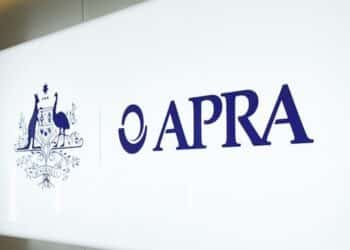Speaking at the SIAA 2025 Conference in Sydney on Tuesday, Oceanic Consulting Group chief executive James Dickson argued that advisers should be including more personalised explanations in statements of advice (SOA).
For example, Dickson suggested that advisers need to quote clients’ actual words when explaining their goals in the SOA, rather than simply paraphrasing it, which clearly demonstrates what the client actually asked for.
Not only will this help clients better understand what they are actually being told, Dickson said this also provides a layer of protection for advisers if and when a case is brought against them through the Australian Financial Complaints Authority (AFCA).
“So, if a case assessor picks up a file cold and really is unable to clearly link, for example, how a client came in and completed a fact find. [The] fact find was conservative and they ended up with a piece of advice that put them into a growth profile,” Dickson said.
“[They] can’t see the notes, can’t understand the coaching conversation that happened in the middle. Advice may be perfectly reasonable, but if that growth portfolio underperformed a conservative portfolio, you’re likely up for a compensation bill.”
Adding to this, he explained that if advisers just use cookie cutter goals and then have to front AFCA for a complaint, then the goals will simply be disregarded because it isn’t what the client actually said.
Creating SOAs that clearly depict what the client wants from the advice, he explained, is crucial to ensure advisers are meeting their compliance obligations while also delivering on the needs of the client.
“Of all of the huge fee-for-no-service programs, of all of the large bank-led Quality of Advice Review programs, the primary issue that we can see as the leader in this space is poor documentation and sloppiness from advisers. And that’s clear and simple,” Dickson said.
“So, anything that we can do to really clarify, how does a goal link to a relevant personal circumstance, link to that piece of advice, and make that as clear as possible, that is how you get through and avoid the crux of compliance issues and get to the heart of how you can demonstrate advice is provided in the best interest. It’s that simple.”
While SOA conversations usually focus on what could be cut out, Behaviour Finance Australia founder and director Simon Russell suggested that some explanations in the documents can be too heavily technical.
As a result, clients are left confused and unsure, indicating that there might be a need for more client-focused explanations.
“Maybe we just can’t cut stuff out. In fact, arguably, we need more stuff in there,” Russell said.
Even so, Mintegrity co-chief executive Amanda Mark said that SOAs are excessively long, despite this being an ongoing pain point for the profession, though not all of this can be laid at the feet of regulators.
“There’s a lot of excess things in there that aren’t required under the legislation, it’s a lot of ass covering basically from a compliance perspective to future proof, just from an ASIC, from a regulatory perspective, but also from an AFCA perspective,” Mark said.
“So, people don’t want to end up in complaints but the regulations are quite clear on what needs to be in there, so we need better ways to do it.
“It has to be in there under the rules. Can’t get around those.”




I find in our office, usually, we have people telling us we need to put more in, to cover xyz. The accounts people, come over, “We need you to add SMSF strategy that show percentages” ok, “In estate planning make sure you mention the literacy and maturity of executor” its important, ok i’ll add it, in insurance make sure you show impact on retirement balance, etc etc, the list gets longer and longer. Oh, yep there is a news ASIC guide or report out i need to read…
“if advisers just use cookie cutter goals” Have you seen xplan… It’s a cookie cutter. Anything that is automated is a cookie cutter.
“Dickson suggested that advisers need to quote clients’ actual words when explaining their goals in the SOA, rather than simply paraphrasing it, which clearly demonstrates what the client actually asked for.” Mr Dickson needs to read RG175, it says that in there. Find out scope to determine clients needs and objectives.
Who is actually giving Personal Advice that is fact not personalised? How can you possibly think this is reasonable particularly as your client is paying you for your Personal Advice.
Morons in Canberra now even agree that 20 years of ever increasing rubbish red tape disclosure like massive SoAs does nothing to help and adds massive costs.
What are these Canberra morons doing to fix their mass, useless over regulation.
How about an SOA Reg of 150+ pages on how to make an SoA efficient.
These clowns live in a fake bureaucratic world and could never make a profit in the real world.
You can’t make this stuff up! I love reading these articles makes me feel that having retired from this industry was one of the best decisions I ever made…!
After the recent round table between six interested parties here are the results about the current SoA :
Person A says it’s far too long
Person B says it’s far too short
Person C says it’s about right
Person D says it’s too technical
Person E says it’s not technical enough
Person F says rename it from SoA to CAR
Meanwhile back at ASIC headquarters their Christmas party planning is in full swing…
I am disappointed the industry is more concerned about how to better “cover your ass” than to ensure the SOA provides actual valuable information for the customer
“Covering your ass” is a very important part of the industry unless you want to be on the ASIC “Name and shame” report. I am not aware of any “rewards or medals” from ASIC for good work and a job well done. Isn’t that what read tap is all about?
Lets go from the current 50 pages to a bit more to make it more interesting for the client!! Why not….